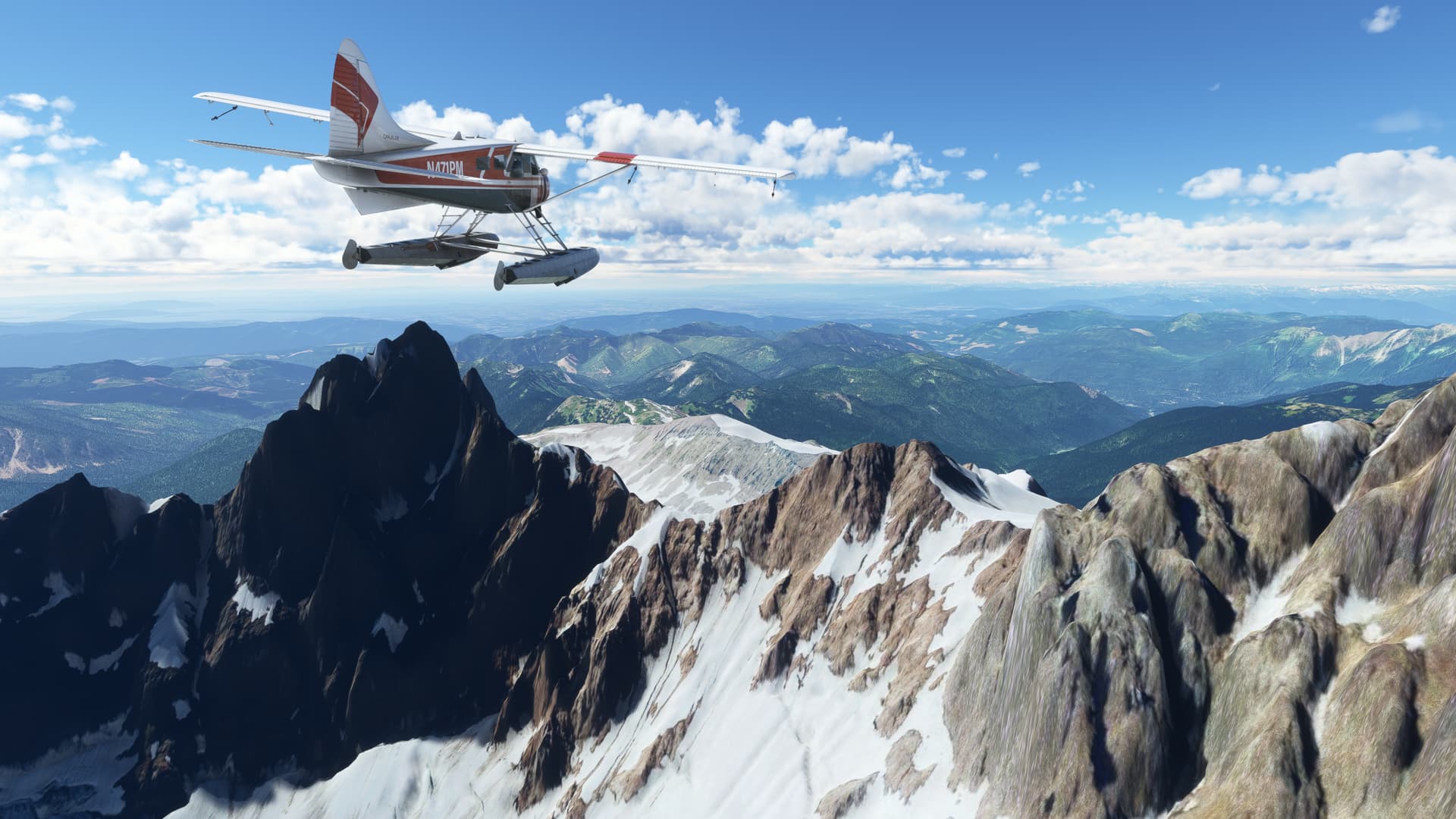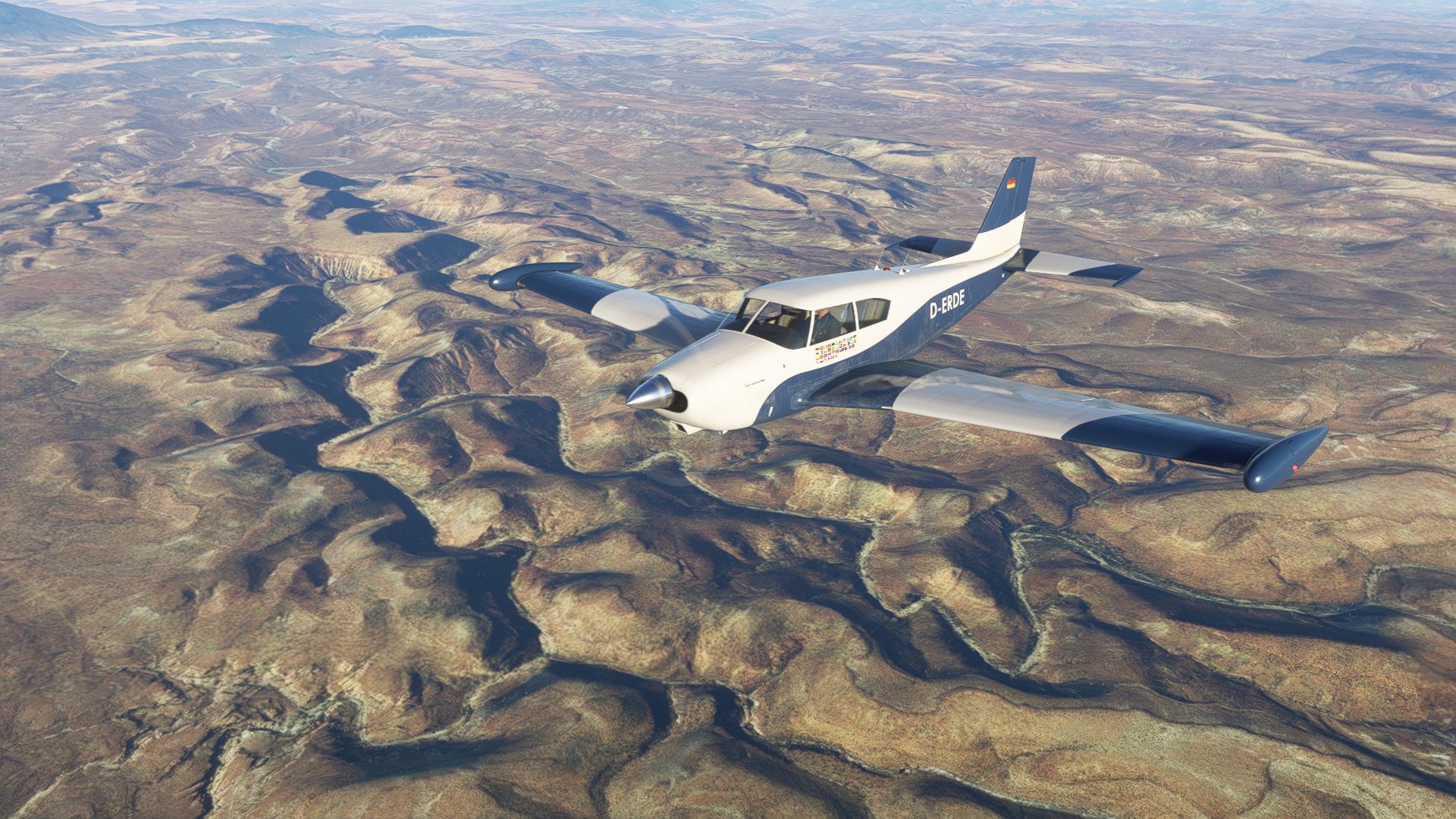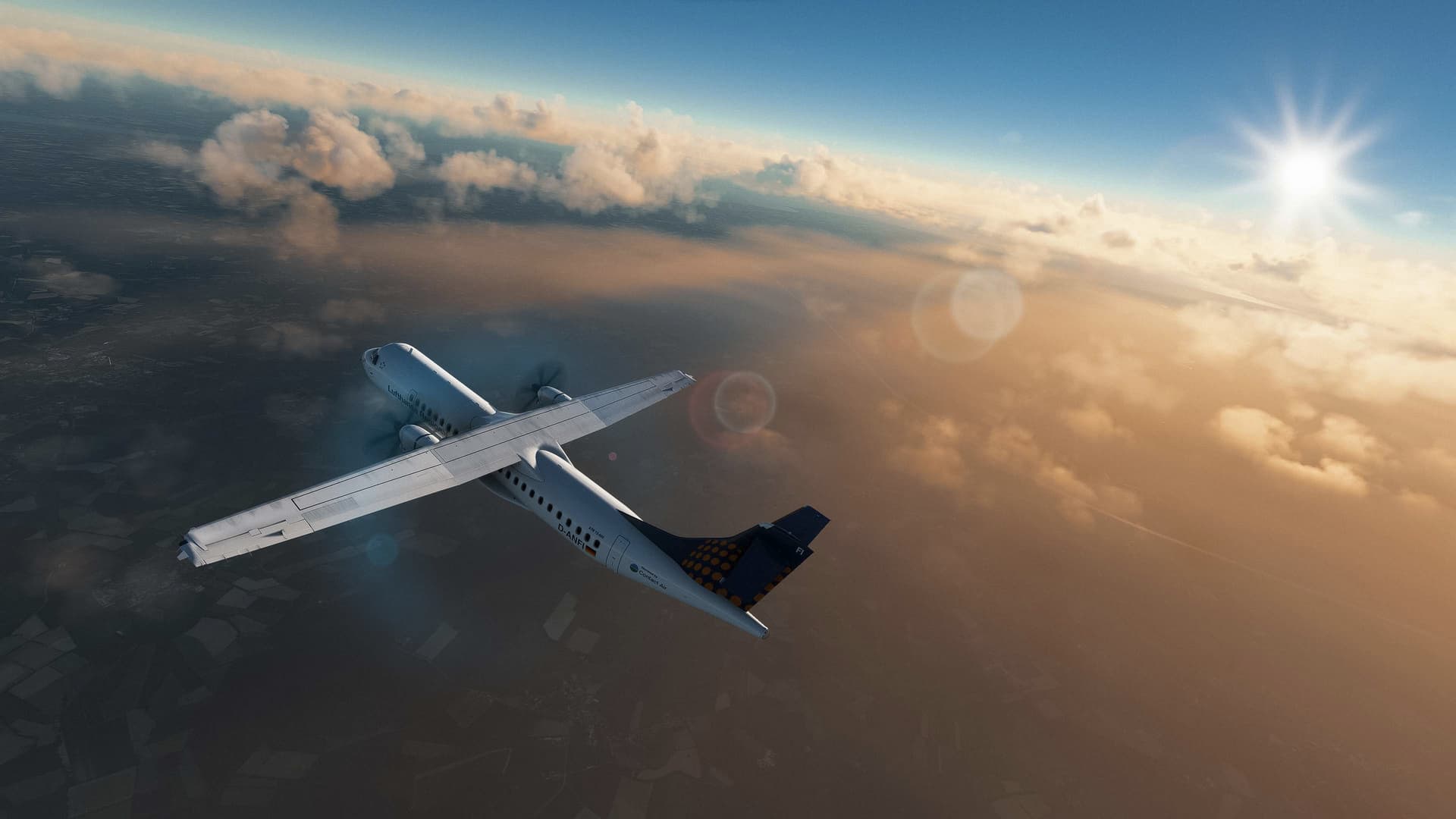I log a few hundred hours a year in light singles and twins, and like a lot of pilots I unwind by flying the same routes again in Microsoft Flight Simulator and X-Plane. Lately I’ve been doing that with Turtle Beach’s VelocityOne Flight Universal Control System paired with the VelocityOne Rudder. After several weeks of pattern work, IFR procedures, and a couple of “let’s see if we can grease this 20-kt crosswind into Aspen” sessions, here’s a pilot’s-eye review of the combo: what nails the fidelity of the cockpit, what still feels sim-toy, and whether this pair makes sense for your desk-to-dispatch dreams.
The all-in-one yoke/throttle that actually behaves like a cockpit
The VelocityOne Flight is a single chassis with a yoke, a modular throttle quadrant, trim wheel, and a small Flight Management Display (FMD). It’s the closest thing right now to a compact, apartment-friendly “swap in, fly, swap out” rig. The yoke has 180° of roll travel and uses non-contact hall-effect sensing on the pitch axle. That’s not marketing fluff: hall sensors remove the scratchy dead-band that cheap potentiometers get once dust and time do their thing, and I could hold a one-dot localizer correction with finger pressure rather than having to overcontrol and recenter every two seconds. Turtle Beach calls out the 180° rotation and hall-effect tech in its specs, and that matches what I felt in hand.


Real airplanes teach you that small controls matter more than big ones. Two features here land squarely in the “small but real” bucket. First, the physical trim wheel: it’s not just a rotary encoder masquerading as trim buttons; you can roll in nose-up trim while you’re in the flare and the yoke relaxes in your palm like it should. Second, the Status Indicator Panel (SIP) and the FMD. The SIP on PC throws annunciations—gear, master caution, etc.—that cut down the head-in-cockpit time on approaches. The FMD is genuinely useful for quick-mapping switches and checking profiles without diving into software mid-flight. Turtle Beach’s support pages lay out the modules clearly, and that mental model matches the hardware on my desk.
The throttle quadrant is modular with swappable lever tops. For a C172 pattern I run a blue prop lever, a black throttle, and a red mixture; for turboprops, I’ll pop on a condition lever and a pair of power levers; for jets you can set dual thrust levers. It’s not as purpose-built as a dedicated Airbus or Boeing quadrant, but it’s versatile enough that I didn’t miss my drawer of 3D-printed lever caps. Turtle Beach advertises the modularity front-and-center, which checks out in practice.
The rudders make the set
Rudder pedals are where a sim rig gets made or broken, because feet are unkind truth-tellers. Turtle Beach’s VelocityOne Rudder uses hall-effect sensors on all axes, offers swappable springs to change centering force, and differential toe brakes. Compatibility includes Windows and Xbox, with the usual caveat that on Xbox you’ll need Turtle Beach’s yoke or flightstick in the chain to talk to the console. Those are all documented claims, and they match what I saw in calibration and in taxi tests.


The pedal geometry is a hybrid: not the long-throw, hinged-from-the-floor feel of a Cessna 182, and not the tight fighter-style “pedal box” either. You can widen the pedal spacing a notch, and the kit includes two face styles so you can bias toward GA or airliner ergonomics. Spring swaps take a few minutes; the lighter spring felt closer to the Cherokee I instruct in, while the heavier spring approximated a stiffer hydraulic linkage you might expect in a larger single. The payoff was on crosswind departures: with the lighter spring I could feed in right rudder on a left-quartering 12-knot wind and dance on the brakes during the first hundred feet of roll without that “digital on/off” feeling that plagues cheap pedals.
Toe brakes are progressive rather than binary. On a tight right-turnout at a non-towered strip, I could hold a whisper of left brake to pin the nosewheel and track the paint without scraping along in steps. In MSFS’s ground-friction model (still imperfect), these pedals let you live in that last ten percent of brake travel where realistic taxi finesse lives.
Setup, desk reality, and the hidden value of “one box”
I don’t have a sim pit; I have a desk that alternates between charts, spreadsheets, and sim time. The VelocityOne Flight clamps to a desk easily and comes off without leaving behind a bracket farm. The pedals use a non-slip base that, on a hardwood floor with a rug, stayed put for me even during aggressive rudder reversals. The adjustable feet are enough to tune out a little wobble. Turtle Beach mentions the stable base and adjustable width; in use, it translated to less fiddling and more flying.
Driver install was uneventful on Windows 11, and the Xbox-friendly DNA means the device IDs cleanly inside MSFS. On my main sim PC, every axis and most of the common buttons were pre-mapped; I spent five minutes reassigning to my personal quirks (trim on the wheel, AP disconnect on the yoke trigger, mixture detent to cutoff). The SIP integration is officially PC-first, with Xbox support contingent on sim updates; Turtle Beach’s product page flags that nuance. If you live on Xbox, factor in that some annunciation niceties may trail PC.
Flying the pattern: what felt real, what didn’t
The biggest compliment I can give the VelocityOne combo is that it got out of the way and let me fly procedures the way I teach them. On departure, liftoff and initial climb felt familiar: rotate at 55, check positive rate, and a tiny trim roll-forward let me lock 80 knots without juggling the yoke. Downwind, the throttle friction and travel let me count “one Mississippi two” and hit 2,100 RPM equivalents reliably, then roll in a half-turn of trim and let the plane fly level hands-off. Abeam, carb heat (mapped), throttle back, hold altitude, add the first notch of flaps with a tactile detent, and the yoke force lightens just enough to cue the pitch change—just like the real thing.
Where the illusion cracked was turbulence. Because the yoke isn’t force-feedback, bumps are purely visual and positional; you don’t feel gust-induced yoke nudges. That’s not a ding on Turtle Beach—the sim world simply hasn’t delivered mass-market FF yokes—but it’s a reminder: for upset recovery reps and energy management, your brain will work harder without the tactile “air” in the controls.

IFR work and the civilized art of small corrections
On an ILS 28R, the hall-effect smoothness paid dividends. I fly needles with fingertip inputs and immediate trim to null out pressure; the yoke let me do that without the jitter you get from sticky pots. Four-dot intercept, trim for 90 KIAS, power for glidepath, and I could bump a half-degree of roll and wait the full four seconds for a stable response rather than fidget. Vertically, the trim wheel allowed proper “pitch for speed, power for slope” discipline. In a hold, I could bank to 20°, roll out with a whisper of opposite aileron, and settle wings level without the see-sawing that cheaper yokes encourage.
The pedals were even more important in instrument flying than in the pattern. Precise rudder lets you center the slip/skid and avoid that tiny skid on base-to-final that translates into a low-and-draggy sink on glidepath. On single-engine drills in the Baron, I could fly blue line plus five with a clean, sustained boot of rudder and a bit of bank into the live engine, and the pedals didn’t spice that with hysteresis.
Build quality, longevity, and the internet’s mixed bag
I treat hardware gently, but I still pay attention to how it will age. The VelocityOne Flight’s plastics are better than entry-level and not as bombproof as boutique gear; the yoke shaft and bearings seemed consistent after a few dozen hours. The rudder rails felt tight and didn’t exhibit slop. Hall sensors are a plus for longevity. The public reports out there are a mixed bag: many users highlight the smooth action and modular design, while some threads raise concerns about long-term durability or calibration quirks, including an occasional brake axis misbehavior in MSFS’s controller menu. Those anecdotes don’t match my unit, but they’re worth noting if you’re allergic to tinkering.

The Xbox angle
If you’re in the living-room sim crowd, this duo is one of the few that works natively with Xbox. The rudders explicitly note Xbox compatibility when paired with the VelocityOne Flight or Flightstick; that’s a structural advantage if your sim room doubles as the TV room. Just remember some PC-only niceties (like the SIP behaviors) may lag on console depending on sim updates.
What I’d change
- Center feel: The yoke’s pitch center is good, but a slightly softer breakout and a hair more damping would help with the last five knots of finesse on short final.
- Throttle detents: The quadrant’s detent options cover most use cases, but I’d love even crisper tactile cues for prop feather and condition-lever gates for turboprops.
- Pedal length: Adjustable pedal length (fore-aft throw) in addition to width would help match the arc you get in different airframes.
- Official profiles: Turtle Beach provides a sensible default mapping, but curated “aircraft-style” profiles (Cessna, Piper, TBM, Airbus, Boeing) you can flip to on the FMD would reduce initial setup time further.

Who should buy it
- New sim pilots who fly everything: If you bounce between a 152, a TBM, and a 737, the VelocityOne Flight’s modular throttle and the compact all-in-one design keep your desk sane.
- Xbox simmers: Native compatibility is a unicorn in this category; this pair delivers it.
- Real-world pilots looking for proficiency: For pattern work, instrument scan, and procedures, the hall-effect smoothness and physical trim wheel let you train your hands, not fight your hardware.
- Students practicing rudder discipline: The swappable-spring rudders make coordinated flight and crosswind technique feel honest without becoming leg day.
Who might pass? If you are already invested in a high-end separate yoke and throttle (and maybe metal-rail pedals), you’ll gain convenience but not necessarily fidelity. If you’re the type who only flies airliners and craves a typed-out throttle quadrant with motorized trim and authentic detents, a purpose-built setup may scratch that itch better.
The pilot test: could I teach with it?
When I run through maneuver syllabi with students—slow flight, power-off stalls, steep turns—I’m listening for the sound of someone flying the airplane instead of the controller. With the VelocityOne combo, the student could. They could establish an airspeed with throttle and trim and then look outside. They could use their feet during a skid ball deflection and feel the nose come back to center, rather than stomping at a vague spring. On a short-field landing practice with a 50-foot imaginary obstacle, they could get stabilized by 500 AGL, track centerline, and use a controlled flare without twitch. That’s a pass.
Bottom line
The Turtle Beach VelocityOne Flight plus VelocityOne Rudder is the closest I’ve come to a “pack-up-the-desk, shoot an approach, pack-it-back” rig that behaves like an airplane rather than a gamepad with delusions. The yoke’s 180° roll travel and hall-effect pitch are the foundation; the physical trim wheel and SIP/FMD reduce sim-UI friction; the modular throttle adapts to whatever you want to fly tonight. The rudders finish the picture with smooth, adjustable, progressive control that finally lets you taxi and crosswind like you mean it. The official specs promise those core traits—hall-effect sensors, modular throttle, SIP/FMD, Xbox compatibility, swappable springs—and in my flying they hold up.

It isn’t perfect: the yoke’s center feel still betrays its price class, the quadrant’s detents could be crisper, and long-term durability chatter online is mixed as with most mass-market gear. But taken as a system, especially for pilots who have to share a desk with the real world, it hits a sweet spot of fidelity, flexibility, and footprint. If you’re a student pilot building muscle memory, an instrument-rated flyer wanting to keep your scan sharp, or an Xbox simmer who wants real rudder and trim without building a cockpit, this combo earns a place under your hands and feet. And if you’re chasing that Aspen crosswind in the pattern after dinner, it’ll make you smile when the mains chirp just right.
Stable, Adjustable, and Foldable Stand
The Turtle Beach VelocityOne Universal Stand is a solid, steel-built platform designed to support flight simulation or racing simulation peripherals like yokes, wheels, pedals and rudder pedals. Its compatibility is broad: it is purpose-made for Turtle Beach’s own VelocityOne Flight Universal Control System and VelocityOne Universal Rudder Pedals, but also supports many third-party accessories thanks to universal slotted holes and pre-drilled mounting points.
One of its standout features is high adjustability. Through quick-release clamps and thumb screws, the user can make stepless adjustments to height, angle, length, tilt and rotation of both upper (for yoke or wheel) and lower (for pedals) mounting platforms, enabling a custom ergonomic setup. The stand has a reversible design (you can flip the orientation) and rubber feet that are adjustable to help eliminate wobble.


For storage or multipurpose rooms, the Stand folds flat without removing accessories, which is a big plus where space is limited. In terms of size, the dimensions are about 710 mm × 450 mm × 200 mm (~28 × 17.7 × 7.9 inches) when set up, and it weighs around 8.99 kg (≈ 19.8 lb).
Pros include durability, flexibility, and good build quality. Some noted challenges are mounting accessories (especially lining up the screw holes under the top platform) when the stand is fully assembled. Overall, it’s regarded as a premium-tier stand that delivers strong value for users who want a stable, configurable, and storable base for their sim-gear.














